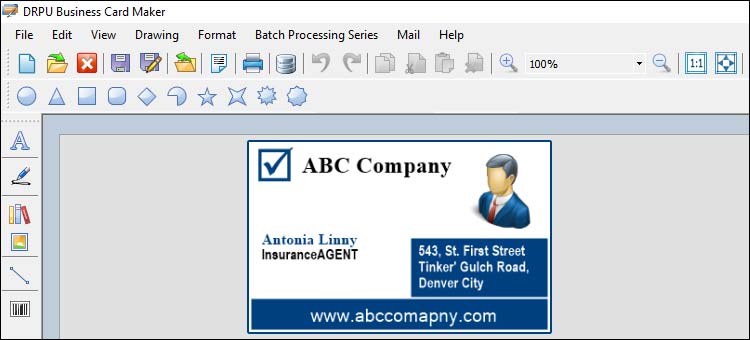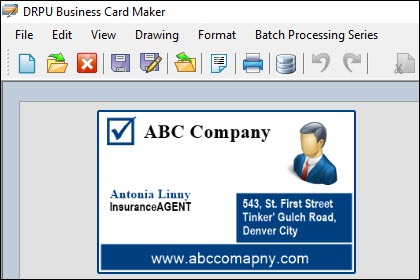Business Card Design: Avoid Common Mistakes and Custom Card Creation
Designing a business card is an important task for any professional or entrepreneur, as it serves as a tangible representation of your brand and can leave a lasting impression on potential clients and business partners. However, it is important to be aware of common mistakes that can make a business card ineffective or even damaging to your brand. In this article, we will discuss some of the most common mistakes to avoid when designing a business card.

-
Using Low-Quality Images
One of the most common mistakes when designing a business card is using low-quality images or graphics. This can result in a blurry or pixelated image, which can make your business card look unprofessional and unappealing. When choosing images or graphics for your business card, make sure that they are high resolution and appropriate for the size of the card. You can also consider hiring a professional designer or photographer to create custom graphics for your business card.
-
Inconsistent Branding
Your business card should be consistent with your branding and reflect the image that you want to present to potential clients and business partners. However, some designers make the mistake of using inconsistent branding on their business cards, which can create confusion and dilute the effectiveness of the card. Make sure that the colors, fonts, and design elements on your business card are consistent with your branding and other marketing materials.
-
Choosing the Wrong Material
The material that you choose for your business card can also impact its effectiveness. Some designers make the mistake of using low-quality or flimsy paper, which can make the card look cheap and unprofessional. Consider using a high-quality, thick paper or other materials such as plastic or metal to create a more durable and impressive card.
-
Illegible Fonts
Another common mistake is using fonts that are too small or difficult to read. This can make it challenging for the recipient to read your contact information or website, which defeats the purpose of a business card. Choose a font that is easy to read, such as Arial or Times New Roman, and make sure that the font size is large enough to be read easily. You can also use bold or italicized text to highlight important information.
-
Not Proofreading
Finally, one of the most common mistakes in business card design is not proofreading the card for errors or typos. Spelling mistakes, grammatical errors, or incorrect contact information can make your business card look unprofessional and can even damage your reputation. Make sure that you proofread your business card carefully before printing it, and consider asking someone else to review it as well.
-
Overcrowding Information
A business card should be concise and easy to read, but some designers make the mistake of overcrowding the card with too much information. This can make the card look cluttered and overwhelming, and can also make it difficult for the recipient to find the information they need. Prioritize the most important information, such as your name, job title, and contact information, and leave out any unnecessary details. You can also consider using the back of the card to include additional information, such as a tagline or brief description of your services.
Create a Custom Business Card Design That Reflects Your Brand and Style
Creating a custom business card design that reflects your brand and style is an important aspect of establishing a professional image for your business. A well-designed business card can not only serve as a tool for promoting your business but also help establish trust and credibility with potential customers or clients. In this guide, we will discuss the steps you can take to create a custom business card design that reflects your brand and style.
-
Define Your Brand
The first step in creating a custom business card design is to define your brand. Your brand is what sets you apart from your competitors and helps customers identify your business. To define your brand, you should consider your company's values, mission, and goals. Think about the message you want to convey through your business card and what kind of image you want to project.
Once you have a clear understanding of your brand, you can start thinking about the design elements that will best reflect it. These design elements can include colors, fonts, graphics, and images. It's important to choose design elements that are consistent with your brand's identity and will resonate with your target audience.
-
Choose Your Design Elements
Once you have defined your brand, it's time to choose the design elements for your business card. These design elements can include colors, fonts, graphics, and images. Here are some tips to help you choose the right design elements for your business card:
-
Colors: Choose colors that are consistent with your brand's identity. For example, if your brand is all about sustainability, you might choose earthy tones and green colors to reflect your commitment to the environment.
-
Graphics: Choose graphics that are consistent with your brand's identity. For example, if you're a tech company, you might choose graphics that reflect your industry, such as computer icons or circuit board patterns.
-
Fonts: Choose fonts that are easy to read and consistent with your brand's identity. If your brand is all about modernity, you might choose a sleek and modern font to reflect that.
-
Images: Choose images that are consistent with your brand's identity. For example, if you're a fashion brand, you might include images of your latest collection on your business card.
-
-
Decide on the Layout
The layout of your business card is another important design element to consider. There are a few different layout options you can choose from, including:

-
Vertical: This layout is the most traditional and is often used for formal business cards.
-
Horizontal: This layout is less formal and can be used for more creative or informal businesses.
-
Square: This layout is less common but can be used for businesses that want to stand out.
Once you've chosen a layout, you can start thinking about the placement of your design elements. Make sure to leave enough white space so that your card doesn't look cluttered.
-
-
Create Your
Design
Now that you have a clear understanding of your brand, chosen your design elements, and decided on a layout, it's time to create your design. There are a few different options you can choose from when it comes to creating your design:
-
Design Software: You can use design software such as Adobe Illustrator, Photoshop, or Canva to create your design. These programs offer a wide range of design tools and templates that can help you create a professional-looking business card.
-
Online Business Card Design Tools: There are a number of online business card design tools available, such as Vistaprint or Moo. These tools allow you to choose a template and customize it with your own design elements.
-
Hire a Graphic Designer: If you don't have design experience or simply want a more professional-looking business card, you can hire a graphic designer to create your design for you.
-
-
Choose the Right Printing
Options:
Once you have finalized your design, you need to choose the right printing options. There are several options to choose from, including:
-
Paper Stock: Choose a paper stock that is durable and represents your brand. For example, if your brand is luxurious, you may want to use a thicker paper stock.
-
Printing Technique: Choose a printing technique that complements your design. For example, if your design has a lot of colors, you may want to choose digital printing.
-
Finishing Options: Choose finishing options that enhance your design. For example, you may want to add a gloss or matte finish to your business card.
-
-
Keep it Simple:
➥While it's important to choose design elements that reflect your brand and style, it's also important to keep your design simple. Your business card should be easy to read and not cluttered with too much information or graphics. Stick to the essential details such as your name, job title, and contact information.
-
Get Feedback:
➥Once you have created your custom business card design, get feedback from others. Show your design to your colleagues, friends, and family members and ask for their opinions. This feedback can help you make any necessary changes to your design.
In conclusion, creating a custom business card design that reflects your brand and style is a crucial step towards building a brand identity. Define your brand identity, choose your design elements carefully, choose the right printing options, keep it simple, and get feedback to create a successful custom business card design.
- Business Card Design: Import & Export, Print Practices, and CreationBy: Techsavvy | 18-07-2023
- Business Card Design: Accessibility, Best Practices, and Avoid MistakesBy: Techsavvy | 18-07-2023
- Business Card Maker: Choosing Factors, Templates, and LibrariesBy: Tech Solution | 18-07-2023
- Business Card Design: Test, Validate, Keyboard Shortcuts, and FeaturesBy: Teachable Tech | 17-07-2023
- Business Card Maker Software: Features, Custom Card Creation, and Best PracticesBy: Techsavvy | 17-07-2023
- Business Card Maker: Keyboard Shortcuts, Tools, Validation, and Popular OptionsBy: Tech Solution | 17-07-2023
| Updated on: 📆 18/07/2023